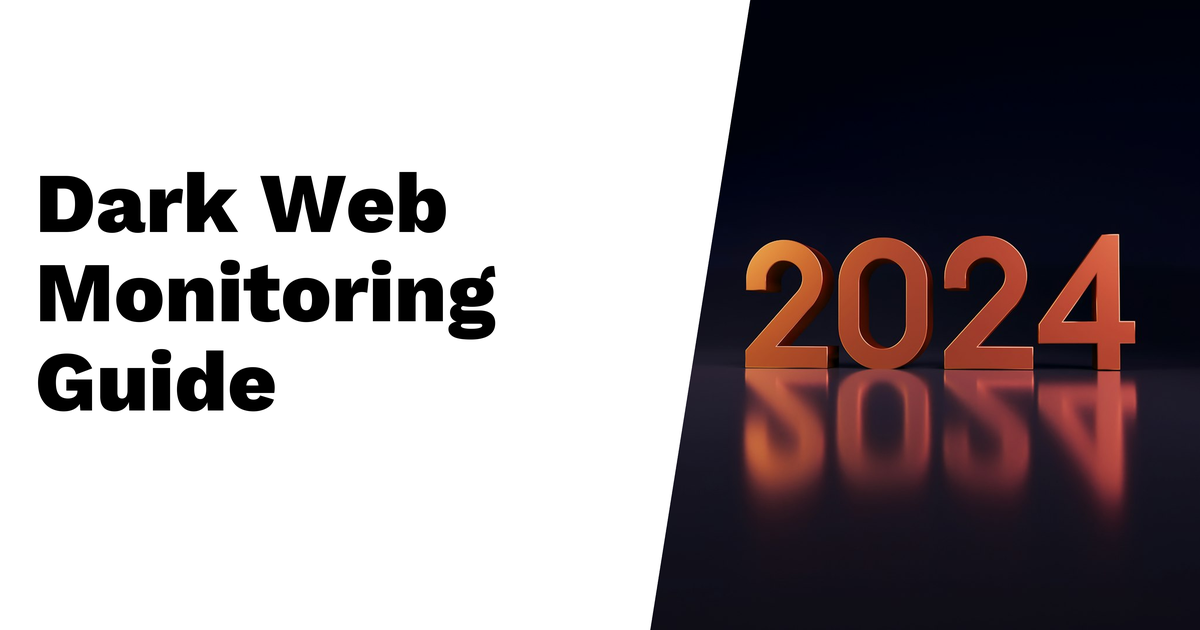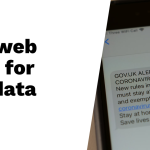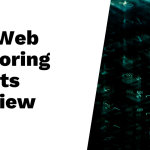Dark web monitoring has become a fundamental aspect of cybersecurity, particularly in 2025. As cybercriminals grow increasingly sophisticated, organizations must be vigilant in protecting their sensitive information from exploitation on the dark web. Proactive monitoring strategies are gaining traction, utilizing advanced tools that offer real-time alerts and AI-driven detection to identify threats before they escalate. Integration with existing security measures enhances overall efficiency in incident response. With the rise of ransomware-as-a-service, businesses are under pressure to safeguard personal data actively. Moreover, educating employees about phishing and social engineering remains essential for a holistic approach to cybersecurity resilience.
Table of Contents
- Overview of Dark Web Monitoring
- Key Trends in 2025 Dark Web Monitoring
- Proactive Monitoring Strategies
- Integration with Cybersecurity Frameworks
- Rise of Ransomware-as-a-Service
- Focus on Data Breaches
- Importance of Employee Education
- Top Dark Web Monitoring Services
- Recorded Future Features
- DarkOwl Capabilities
- Digital Shadows Overview
- Flashpoint Insights
- ZeroFox Functionality
- SpyCloud Services
- Constella Intelligence Highlights
- KELA Offerings
- Flare Systems Tools
- Breachsense Features
- Risk Identification through Monitoring
- Comprehensive Threat Visibility
- Operational Efficiency in Cybersecurity
- Frequently Asked Questions
Overview of Dark Web Monitoring
Dark web monitoring is a crucial aspect of cybersecurity that focuses on the ongoing surveillance of sensitive information across hidden internet spaces. This process aims to identify stolen data and mitigate potential cyber threats before they can cause significant harm. It comprises several components, including advanced technology, established processes, and necessary human oversight to ensure effectiveness. The types of data typically monitored include personal details, financial records, and proprietary business information.
Understanding the dark web threat landscape is essential, as it reveals various risks such as identity theft, data breaches, and the trade of illicit goods. Common data sources for monitoring include dark web forums, marketplaces, and paste sites where stolen information is often shared. When threats are detected, immediate response actions are essential to minimize damage and protect sensitive assets. Additionally, dark web monitoring supports organizations in complying with data protection regulations by identifying exposure and facilitating rapid remediation efforts.
For maximal efficiency, many organizations partner with cybersecurity firms to enhance their monitoring capabilities. As methods and technologies continue to evolve, so too does the need for effective dark web monitoring services to combat emerging threats and safeguard digital information.
Key Trends in 2025 Dark Web Monitoring
In 2025, dark web monitoring is evolving rapidly, driven by several key trends. One major trend is the integration of artificial intelligence, which enhances threat detection capabilities. AI helps organizations analyze vast amounts of data quickly, identifying potential risks that might go unnoticed otherwise. Real-time monitoring is also gaining traction, with many services now offering instant alerts and notifications about potential threats. This shift enables businesses to respond more swiftly to any suspicious activity.
Collaboration among organizations is becoming increasingly important. Many companies are working together to share threat intelligence, creating a more resilient defense against cyber threats. This collective approach enhances the understanding of emerging risks, particularly in industries that face similar challenges. Furthermore, the focus on automation is leading to the development of more automated tools for data collection and analysis, reducing the manual effort required in monitoring.
User experience is another area of improvement, as monitoring tools are becoming more user-friendly. Enhanced user interfaces allow even non-technical staff to navigate these systems with ease. Moreover, customization is on the rise, with services tailoring their offerings to meet the specific needs of different industries, ensuring that organizations receive relevant insights.
The emphasis on sharing threat intelligence across sectors is also increasing, enabling faster identification of threats and more coordinated responses. Regulatory changes are impacting how organizations monitor and report threats, pushing them to adopt more stringent compliance measures. The rise of managed services is noteworthy, as more businesses choose to outsource dark web monitoring to specialized firms, allowing them to focus on their core competencies.
Lastly, there is a growing focus on user-centric approaches, prioritizing the protection of individual user data and privacy. As organizations navigate this complex landscape, these trends are shaping the future of dark web monitoring, making it an indispensable part of cybersecurity strategies.
Proactive Monitoring Strategies

Proactive monitoring strategies are essential for organizations looking to safeguard their sensitive data from dark web threats. Continuous scanning is at the heart of these strategies, involving regular checks for any data exposure that may have occurred on the dark web. This means organizations must implement systems that can monitor their data around the clock, ensuring that any breach is detected as soon as possible.
Threat modeling plays a crucial role in understanding potential risks before they materialize. By identifying and analyzing various threat scenarios, organizations can prepare more effectively. Coupled with this is the necessity of having incident response plans in place, which outline the actions to take when a threat is detected. These plans should be clear and practiced regularly to ensure that teams can respond swiftly and effectively.
The use of automation significantly enhances the efficiency of monitoring processes. Automated tools can process vast amounts of data, reducing response times and allowing human analysts to focus on more complex threats. Regular updates to these tools are vital to keep pace with the latest threat data, ensuring the organization’s defenses remain strong against evolving risks.
Collaboration with law enforcement adds another layer of security. By partnering with authorities, organizations can receive insights that help mitigate threats more efficiently. Employee involvement is also crucial; fostering a culture where staff are encouraged to report suspicious activities can lead to early detection of potential issues.
Conducting regular vulnerability assessments is necessary for identifying internal security weaknesses. This ensures that any gaps in protection are addressed before they can be exploited. Moreover, third-party risk management is vital, as vendors and partners can pose significant threats if not monitored properly.
Finally, employing red teaming exercises can simulate attacks to test the effectiveness of monitoring strategies. These exercises help organizations to identify weaknesses and improve their defenses against real-world threats, making proactive monitoring a comprehensive approach to cybersecurity.
- Continuous Scanning: Regular checks for data exposure on the dark web.
- Threat Modeling: Understanding potential threats before they occur.
- Incident Response Plans: Preparing strategies for quick action upon detection.
- Use of Automation: Automating monitoring to enhance efficiency and reduce response time.
- Collaboration with Law Enforcement: Partnering with authorities for threat mitigation.
- Regular Updates: Keeping monitoring tools updated with the latest threat data.
- Employee Involvement: Encouraging staff to report suspicious activities.
- Vulnerability Assessments: Regular checks for internal security weaknesses.
- Third-Party Risk Management: Monitoring vendors and partners for potential threats.
- Use of Red Teaming: Simulating attacks to identify weaknesses in monitoring strategies.
Integration with Cybersecurity Frameworks
Integrating dark web monitoring into broader cybersecurity frameworks is crucial for organizations in 2025. This holistic approach ensures that monitoring efforts are not isolated but rather part of a comprehensive strategy that aligns with established standards like NIST and ISO. By adopting these frameworks, organizations can implement best practices that enhance their security posture.
Data correlation is a key aspect of this integration. Linking findings from dark web monitoring with other threat intelligence sources allows organizations to gain a more complete view of their threat landscape. For example, if sensitive information about a company appears on the dark web, correlating that data with internal security logs can help determine the extent of the breach and inform response strategies.
Moreover, integrating monitoring tools with incident management platforms streamlines the response process. When a potential threat is detected, automated alerts can trigger predefined incident response workflows, ensuring timely action. Collaboration across departments, such as IT, legal, and HR, is also essential. Each department plays a role in addressing the implications of dark web findings, from managing legal risks to protecting employee data.
Regular training sessions are vital for raising awareness about dark web threats among employees. The human element often presents vulnerabilities, so keeping staff informed about the dangers and how to recognize them can significantly reduce risks. Additionally, developing policies that incorporate insights from dark web monitoring helps establish clear responses to potential threats and reinforces a culture of security within the organization.
Continuous improvement is necessary to adapt to the evolving threat landscape. Organizations should regularly assess their integration processes and make adjustments based on lessons learned from incidents. Creating robust reporting mechanisms fosters clear communication channels for threat reporting, ensuring that all stakeholders are informed and can act swiftly. Feedback loops from past incidents can be invaluable in refining monitoring frameworks and enhancing overall security measures.
Rise of Ransomware-as-a-Service
Ransomware-as-a-Service (RaaS) has become a significant threat in the cyber landscape, particularly as its tools and services are readily available on the dark web. This accessibility means that even those with minimal technical skills can purchase ransomware kits and launch attacks with frightening ease. User-friendly interfaces make it simple for attackers to execute highly disruptive operations without needing extensive expertise.
Critical infrastructure is increasingly becoming the target of ransomware attacks, highlighting the severity of this trend. Sectors such as healthcare, energy, and finance have experienced targeted assaults that disrupt services and compromise sensitive data. The rise of affiliate models has further fueled this trend, with ransomware operators partnering with affiliates to maximize their reach and impact. This collaboration allows for a greater number of attacks, as affiliates can focus on exploiting vulnerabilities while operators handle the technical aspects of the ransomware deployment.
Supply chain vulnerabilities also present a significant risk, as cybercriminals often target third-party providers to infiltrate larger organizations. This strategy not only amplifies the potential for damage but also complicates recovery efforts for the affected companies. In response to these growing threats, attackers are demanding higher ransoms than ever before, which places immense pressure on organizations to comply or face severe operational consequences.
The increasing incidents of ransomware are also reshaping the landscape of cyber insurance. Insurers are re-evaluating their policies and coverage options due to the rising costs associated with ransomware recovery and payouts. Law enforcement agencies are ramping up their efforts to combat this growing threat, recognizing that a coordinated response is essential to curb the trend. As public awareness grows, more organizations are starting to recognize the need for proactive defenses against ransomware attacks, investing in advanced security measures and dark web monitoring services to safeguard their operations.
Focus on Data Breaches
Data breaches are becoming alarmingly frequent and severe, posing significant risks to organizations and individuals alike. Cybercriminals are increasingly targeting personal, financial, and health information, which are highly valuable on the dark web. The impact of these breaches can be devastating, leading to identity theft and substantial financial losses for victims. Organizations are mandated by notification laws to inform affected individuals promptly, but the long-term effects can linger, damaging reputations and eroding customer trust. Regulatory scrutiny has intensified, pushing companies to adopt stronger data protection practices and prioritize breach prevention, including enhanced security measures and continuous monitoring. In the aftermath of breaches, victims often pursue class action lawsuits against companies, further complicating recovery efforts. To mitigate these risks, many organizations are investing in cybersecurity insurance, aiming to shield themselves from the financial burdens associated with breaches. Additionally, companies are embracing data minimization strategies, limiting the amount of sensitive data they collect to reduce exposure. This evolving landscape underscores the critical need for effective dark web monitoring to protect sensitive data from falling into the wrong hands.
Importance of Employee Education
Employee education plays a vital role in enhancing an organization’s cybersecurity posture. Training employees to recognize phishing attempts is essential, as these attacks often serve as gateways for more significant breaches. By raising awareness around social engineering tactics, organizations can empower employees to spot suspicious behavior and reduce the chances of falling victim to such schemes. Regular training sessions help keep staff informed about emerging threats and reinforce best practices in cybersecurity. Conducting simulated attacks, like mock phishing campaigns, allows organizations to assess employee awareness and readiness. Furthermore, having clear reporting procedures ensures that employees know how to report any suspicious activities promptly. This creates a cultural shift towards a security-first mindset, encouraging everyone to take responsibility for safeguarding sensitive information. Training on access control teaches employees the importance of handling sensitive data appropriately, while incident response training prepares them for potential security incidents. Feedback mechanisms enable organizations to gather employee input on the effectiveness of training programs, ensuring continuous improvement. Providing resources for self-education on cybersecurity threats also supports ongoing awareness and vigilance among employees.
Top Dark Web Monitoring Services
Recorded Future stands out for its predictive intelligence, offering real-time alerts that integrate seamlessly with existing security operations, providing organizations with broad visibility into threats. DarkOwl specializes in raw data access, allowing users to dive deep into historical data indexing, which can be invaluable for understanding past incidents. Digital Shadows focuses on digital risk protection, combining automated takedown services with human-validated alerts to ensure brand safety. Flashpoint is known for its extensive underground monitoring, leveraging human analysis to provide business risk intelligence that organizations can act upon.
ZeroFox takes a unique approach by managing social media threats alongside automated dark web monitoring, making it easier for companies to safeguard their online presence. SpyCloud targets compromised credentials, offering automated remediation and session cookie detection, which can help organizations recover quickly from breaches. Constella Intelligence monitors compromised identities, providing automated takedown services that can mitigate risks effectively.
KELA gathers unique intelligence from cybercriminal communities, offering real-time alerts and detailed profiles of threat actors, which can enhance situational awareness for organizations. Flare Systems provides threat exposure management, delivering high-fidelity alerts that enable organizations to respond promptly to potential risks. Lastly, Breachsense delivers real-time breach detection with API solutions, allowing companies to monitor credentials efficiently and respond to threats as they arise. Each of these services plays a crucial role in helping organizations navigate the complexities of the dark web and maintain their security posture in an ever-evolving landscape.
| Service Name | Focus | Key Features |
|---|---|---|
| Recorded Future | Predictive intelligence and threat visibility | Real-time alerts, integration with security operations, broad data coverage |
| DarkOwl (Vision) | Raw data access from the dark web | Historical data indexing, search query capabilities |
| Digital Shadows (SearchLight) | Digital risk protection | Human-validated alerts, brand protection, automated takedown services |
| Flashpoint | Business risk intelligence | Human analysis, extensive underground monitoring |
| ZeroFox | Social media and external attack surface management | Automated threat hunting, dark web monitoring |
| SpyCloud | Compromised credential recovery | Automated remediation, session cookie detection |
| Constella Intelligence | Identity threat intelligence | Monitoring for compromised identities, automated takedowns |
| KELA | Exclusive intelligence from cybercriminal communities | Real-time alerts, detailed threat actor profiling |
| Flare Systems | Threat exposure management | High-fidelity alerts, automated remediation |
| Breachsense | Real-time breach detection | API-first solutions for credential monitoring |
Recorded Future Features
Recorded Future stands out in the dark web monitoring space with its robust features designed to keep organizations ahead of potential threats. Its predictive intelligence capability analyzes threat data, helping to anticipate future attacks, which is crucial for proactive defense strategies. The platform integrates seamlessly with existing security operations, enabling teams to leverage their current tools without disruption. Users benefit from real-time alerts, receiving immediate notifications when threats are detected. This feature ensures that organizations can respond quickly to emerging risks.
The service offers broad data coverage, monitoring various dark web sources for comprehensive insights into potential threats. Its user-friendly interface allows easy navigation, making it accessible for users of all technical backgrounds. Customizable dashboards give users tailored views to align with their specific needs, enhancing usability. In-depth threat analysis provides organizations with an understanding of threat actor behaviors and tactics, which is vital for developing effective countermeasures.
Collaboration tools within Recorded Future facilitate sharing findings across teams, promoting a unified approach to threat management. Regular updates ensure that the threat data remains accurate and relevant, allowing organizations to act on the latest intelligence. Additionally, the platform provides case studies that illustrate real-world examples of threat impacts and responses, offering valuable lessons for risk management.
DarkOwl Capabilities
DarkOwl offers a powerful suite of capabilities designed specifically for security professionals navigating the dark web landscape. One of its standout features is raw data access, enabling users to sift through vast amounts of dark web information, which is crucial for identifying potential threats. The platform also boasts historical data indexing, allowing organizations to access past data and perform trend analysis, a key component for understanding evolving threats.
Flexible search query capabilities enhance the user experience, enabling professionals to pinpoint specific data quickly and efficiently. DarkOwl is designed with the user in mind, ensuring that security teams can easily navigate the complexities of dark web monitoring. Its integration with various security tools allows for a seamless workflow, enhancing overall cybersecurity strategies.
The service generates detailed reports, providing comprehensive insights that help organizations make informed decisions. Real-time alerting mechanisms ensure that users are notified of relevant findings as they occur, facilitating rapid response to potential threats. Additionally, data visualization features present insights in an easy-to-understand format, making it simpler for teams to interpret complex data.
DarkOwl also emphasizes compliance, assisting organizations in meeting regulatory requirements. The platform engages with its community, actively seeking user feedback to continuously improve its offerings, ensuring it stays relevant in a rapidly changing cyber landscape.
Digital Shadows Overview
Founded in 2015, Digital Shadows has established itself as a key player in the digital risk protection landscape. Their flagship product, SearchLight, specializes in dark web monitoring and provides clients with human-validated alerts, which significantly reduce false positives. This tailored approach ensures that organizations receive accurate information about potential threats to their brands and assets. Beyond dark web monitoring, Digital Shadows also focuses on brand protection and features automated takedown services to help mitigate risks quickly. The service extends its reach by monitoring a diverse array of sources, including social media and various online forums, thus giving organizations a comprehensive view of their digital exposure. Clients benefit from customized reports that cater to their specific needs, and the integration with existing cybersecurity systems is designed to be seamless. Additionally, user-friendly dashboards present clear visualizations of threat levels and alerts, making it easier for organizations to stay informed. Digital Shadows places a strong emphasis on ongoing support and customer service, ensuring that clients can navigate the complexities of digital risk management effectively.
Flashpoint Insights
Flashpoint stands out in the realm of dark web monitoring by focusing on business risk intelligence derived from the dark web. Their platform offers insights into emerging threats and vulnerabilities that organizations face today. What sets Flashpoint apart is their commitment to human analysis; they interpret vast amounts of data to provide actionable intelligence. By covering a wide array of underground markets and forums, they allow businesses to gain a clearer understanding of their unique threat landscape. Clients can tailor alert settings to match their specific needs, ensuring they receive information relevant to their operations. Additionally, Flashpoint provides comprehensive reports detailing threat actors and their tactics, which can be invaluable for organizations looking to preemptively defend against attacks. The integration of Flashpoint’s tools with existing security solutions significantly enhances their effectiveness. Moreover, their emphasis on customer education helps clients not just receive insights, but also understand the implications of these findings, fostering a more informed approach to cybersecurity. With a strong reputation for delivering timely and relevant information, Flashpoint is a key player for organizations aiming to navigate the complex dark web landscape.
ZeroFox Functionality
ZeroFox stands out in the realm of dark web monitoring due to its unique focus on social media and external attack surface management. The platform employs automated threat hunting across a variety of online channels, making it easier for organizations to stay ahead of potential threats. Dark web monitoring is a critical aspect of ZeroFox’s services, providing clients with real-time alerts regarding threats to their brand reputation. With the integration of AI and machine learning, ZeroFox enhances its detection capabilities, allowing for quicker identification of risks. The user-friendly interface simplifies monitoring and response, ensuring that organizations can act swiftly on any alerts. Additionally, ZeroFox generates comprehensive reports that guide organizations in developing effective risk mitigation strategies. For those facing immediate threats, the platform offers incident response services to manage situations promptly. By emphasizing brand protection in the digital landscape, ZeroFox helps clients navigate the complexities of online threats with confidence.
SpyCloud Services
SpyCloud offers specialized services focused on compromised credential recovery and monitoring. Their platform is designed to help organizations swiftly identify stolen login credentials, a crucial step in preventing unauthorized access. With automated remediation processes in place, the risk of credential misuse is significantly minimized. They actively monitor the dark web for account breaches and compromised data, ensuring that clients receive real-time alerts for any exposed credentials. This proactive approach enables organizations to act quickly in response to potential threats. Additionally, SpyCloud emphasizes session cookie detection, a key feature that helps prevent unauthorized access to user accounts. Clients benefit from insights into how their data is being exploited, allowing for informed decision-making regarding security measures. The user-friendly interface enhances the overall experience, making it easier for organizations to navigate the complexities of dark web monitoring. Tailored recommendations for improving security postures are also provided, along with ongoing support to help organizations effectively manage emerging threats.
Constella Intelligence Highlights
Constella Intelligence is a key player in the realm of identity threat intelligence and monitoring. Their focus is on tracking compromised identities across both the dark web and surface web, providing clients with a comprehensive view of potential threats. One standout feature of Constella is their automated takedown service, which acts quickly to prevent the misuse of stolen data. Clients benefit from detailed insights into identity theft risks, receiving timely alerts tailored to their specific monitoring preferences. The platform also boasts a robust reporting system, enabling ongoing analysis of identity risks and trends. Integration with existing identity management solutions is seamless, allowing organizations to enhance their security posture without disruption. Constella emphasizes proactive measures to mitigate identity theft risks and offers educational resources to help organizations understand the threats they face. Their service is recognized for its extensive data coverage and accuracy, making it a valuable tool for any organization looking to safeguard their identities in an increasingly dangerous digital landscape.
KELA Offerings
KELA stands out in the dark web monitoring landscape by offering exclusive intelligence sourced directly from cybercriminal communities. This unique perspective allows clients to gain insights into the tactics and motivations of threat actors, enhancing their understanding of the risks they face. With real-time alerts, KELA keeps clients informed about emerging threats and vulnerabilities, enabling swift action to mitigate potential damage. The platform’s detailed profiling of threat actors equips organizations with knowledge about their adversaries, making it easier to devise effective defenses. KELA’s focus on actionable insights means that organizations can tailor their monitoring efforts based on specific threats, ensuring that they stay one step ahead of cybercriminals. By covering a variety of dark web sources, including forums and marketplaces, KELA provides a comprehensive view of the threat landscape. Additionally, KELA supports integration with existing cybersecurity measures, allowing organizations to enhance their overall security posture. The in-depth analysis provided by KELA helps clients to not only identify risks but also to understand the broader trends in cybercrime, as evidenced by their regular research reports.
Flare Systems Tools
Flare Systems is a key player in the realm of threat exposure management and monitoring. Their platform is designed to deliver high-fidelity alerts for potential threats, ensuring that organizations can act quickly when issues arise. One of the standout features of Flare is its automated remediation capabilities, which allow companies to respond swiftly to incidents without getting bogged down by manual processes. Flare focuses heavily on comprehensive monitoring of dark web activities, offering clients detailed reports that highlight various threats affecting their assets. The user-friendly dashboards make navigation simple, giving users easy access to vital information at a glance. Additionally, Flare’s robust integration capabilities mean it can seamlessly work with existing cybersecurity tools, enhancing an organization’s overall security posture. Ongoing support and consultation services further strengthen Flare’s offerings, helping organizations to better understand their risk profiles and refine their threat detection techniques. This commitment to continuous improvement ensures that Flare remains at the forefront of dark web monitoring, equipping clients with the tools they need to stay ahead of evolving threats.
Breachsense Features
Breachsense stands out in the landscape of dark web monitoring by prioritizing real-time breach detection and monitoring. Their platform offers API-first solutions for credential monitoring, allowing organizations to seamlessly integrate with their existing systems. Clients benefit from real-time alerts regarding exposed credentials and data, ensuring they are promptly informed of potential threats. The platform’s user-friendly navigation enhances accessibility, making it easier for teams to manage and respond to alerts. Breachsense provides detailed reports on breaches impacting organizations, along with insights into potential vulnerabilities and the duration of data exposure. To further support their clients, Breachsense offers consultation services aimed at improving security measures, emphasizing proactive steps to mitigate breach impacts. Additionally, clients can customize alert settings according to their specific needs, ensuring that they only receive notifications relevant to their unique risk profiles.
Risk Identification through Monitoring
dark web monitoring is vital for identifying exposed data that could lead to significant risks for organizations. By continuously scanning the dark web, companies can discover if their sensitive information has been compromised and for how long it has been exposed. This capability enables organizations to act quickly, minimizing the potential fallout from data breaches. Real-time alerts play a crucial role, allowing businesses to respond promptly to threats as they arise, thus mitigating potential impacts.
Moreover, these monitoring services provide a comprehensive view of the threat landscape, helping organizations track mentions of their data across various platforms. This insight can be linked to other security sources, enhancing overall cybersecurity strategies. For instance, a company might receive an alert about its stolen credentials being sold on a dark web forum and can then initiate further investigations or tighten their security measures accordingly.
Furthermore, organizations can customize alerts based on their specific needs and priorities, ensuring they are only notified about the most relevant threats. By identifying vulnerabilities before they can be exploited, businesses can not only protect their assets but also bolster their incident response capabilities. The insights gained from dark web monitoring can ultimately inform broader cybersecurity strategies, leading to a stronger and more resilient security posture.
Comprehensive Threat Visibility
Comprehensive threat visibility is a cornerstone of effective dark web monitoring services in 2025. Organizations benefit from continuous surveillance of the dark web, receiving timely alerts about any mention of their sensitive data. This ongoing observation allows businesses to gain a clearer understanding of their risk exposure, identifying potential threats before they escalate. By correlating dark web insights with other threat intelligence sources, organizations can enhance their overall threat detection capabilities. Real-time data empowers teams to prioritize their response efforts, ensuring they can act swiftly against emerging threats. Such visibility supports informed decision-making in cybersecurity, helping organizations stay ahead of evolving risks. Furthermore, monitoring can uncover patterns that inform future security strategies, enabling a proactive approach to cybersecurity. In this dynamic threat landscape, comprehensive visibility is not just beneficial, it is essential for maintaining a strong defense against cybercriminal activities.
Operational Efficiency in Cybersecurity
Operational efficiency in cybersecurity is crucial as threats evolve. Automation tools can handle repetitive tasks, freeing up cybersecurity teams to focus on more complex issues. For example, security teams can use automation to manage alerts or scan for vulnerabilities, which saves time and reduces the chance of human error. Centralized logging solutions enhance visibility, making it easier for teams to respond to incidents quickly. Machine learning algorithms are also becoming common, as they can detect anomalies and potential threats faster than traditional methods.
A risk-based approach allows organizations to prioritize their security efforts, ensuring that resources are allocated effectively. Regularly updating and patching systems minimizes vulnerabilities, keeping security measures up to date. Integrating threat intelligence feeds provides real-time data on emerging threats, enabling proactive defenses. Regular security assessments and penetration testing help identify weaknesses before they can be exploited.
Collaboration between IT and security teams is essential; cohesive strategies lead to more effective responses to threats. Incident response plans that clearly define roles and responsibilities contribute to efficient handling of security incidents. Additionally, fostering a culture of security awareness among employees helps reduce the likelihood of human error leading to breaches.
Frequently Asked Questions
What exactly are dark web monitoring services?
Dark web monitoring services help to track and alert you if your personal information, like email addresses or passwords, shows up on the dark web, which is the hidden part of the internet where illegal activities take place.
How do dark web monitoring services work?
These services send out automated processes, called crawlers, to scan different dark web forums and marketplaces to find your information. If they detect any of your details, they notify you, so you can take action.
Why should I consider using a dark web monitoring service?
Using a dark web monitoring service can give you peace of mind knowing that your sensitive information is being watched. If your data is found, you can act quickly to protect yourself from identity theft or fraud.
Who should use dark web monitoring services?
Anyone who uses the internet, especially individuals with sensitive information, like social security numbers or login credentials, can benefit from dark web monitoring services. It is particularly useful for businesses as well.
What should I do if my information is found on the dark web?
If your information is detected on the dark web, you should change your passwords immediately, consider freezing your credit, and report the situation to the proper authorities to minimize potential damage.
TL;DR In 2025, dark web monitoring is vital for cybersecurity as it involves tracking sensitive information on the dark web to prevent data breaches. Key trends include proactive monitoring through AI technologies, integration with broader cybersecurity strategies, the rise of ransomware-as-a-service, and a focus on protecting against data breaches. Employee education remains crucial to address human error. Leading services include Recorded Future, DarkOwl, Digital Shadows, Flashpoint, ZeroFox, SpyCloud, Constella Intelligence, KELA, Flare Systems, and Breachsense. Effective monitoring provides risk identification, comprehensive threat visibility, and enhances operational efficiency.





